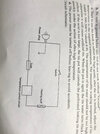HI to all my old friends and buds!
Recently purchased a solder pot for tinning wires.
To charge the pot takes a pound of bar solder which would more than double the investment. Did not want to spend the money or heat up that much solder to tin a few wires. What follows is how I made the solder pot more suitable for hobbyist use.
This thing is designed to hold a lb of liquid metal which is inherently dangerous. My modification significantly reduces the amount of liquid metal. Safety Nazis need not respond.
I wanted a smaller pot. So I turned aluminum on the metal lathe to fit the pot and drilled a blind 9/16" hole 1 inch deep. Solder to fill this is about 1 1/4 oz. For good heat transfer I cranked the pot temperature all the way up and melted a bit of lead in the bottom and set the aluminum into it.
The lead is denser than the aluminum which floats on the lead. The lead melting point is about 100C higher than the solder so the lead does not remelt in use. I used a bit too much lead which caused the aluminum to stick up more than planned but the unit seems ok with it. Not melting an entire lb of solder may help it heat up faster too. While the aluminum heats up too it does not need the state change energy, "Heat of Fusion", that the solder would. The thing heats surprising fast and is slow to cool down. EDIT: Room temperature to liquid solder is 12 minutes.
Lead tin solder does not stick to aluminum so the pot should clean nicely. The lead in the bottom is printers lead which I fluxed with saw dust. Because I did not use an corrosive flux the steel pot should last indefinitely.
This might be done without a metal lathe. Use round aluminum stock that fits into the pot. Wire down the aluminum so it is just a bit off the bottom and pour lead into the gap.

Recently purchased a solder pot for tinning wires.
To charge the pot takes a pound of bar solder which would more than double the investment. Did not want to spend the money or heat up that much solder to tin a few wires. What follows is how I made the solder pot more suitable for hobbyist use.
This thing is designed to hold a lb of liquid metal which is inherently dangerous. My modification significantly reduces the amount of liquid metal. Safety Nazis need not respond.
I wanted a smaller pot. So I turned aluminum on the metal lathe to fit the pot and drilled a blind 9/16" hole 1 inch deep. Solder to fill this is about 1 1/4 oz. For good heat transfer I cranked the pot temperature all the way up and melted a bit of lead in the bottom and set the aluminum into it.
The lead is denser than the aluminum which floats on the lead. The lead melting point is about 100C higher than the solder so the lead does not remelt in use. I used a bit too much lead which caused the aluminum to stick up more than planned but the unit seems ok with it. Not melting an entire lb of solder may help it heat up faster too. While the aluminum heats up too it does not need the state change energy, "Heat of Fusion", that the solder would. The thing heats surprising fast and is slow to cool down. EDIT: Room temperature to liquid solder is 12 minutes.
Lead tin solder does not stick to aluminum so the pot should clean nicely. The lead in the bottom is printers lead which I fluxed with saw dust. Because I did not use an corrosive flux the steel pot should last indefinitely.
This might be done without a metal lathe. Use round aluminum stock that fits into the pot. Wire down the aluminum so it is just a bit off the bottom and pour lead into the gap.
Attachments
Last edited:


